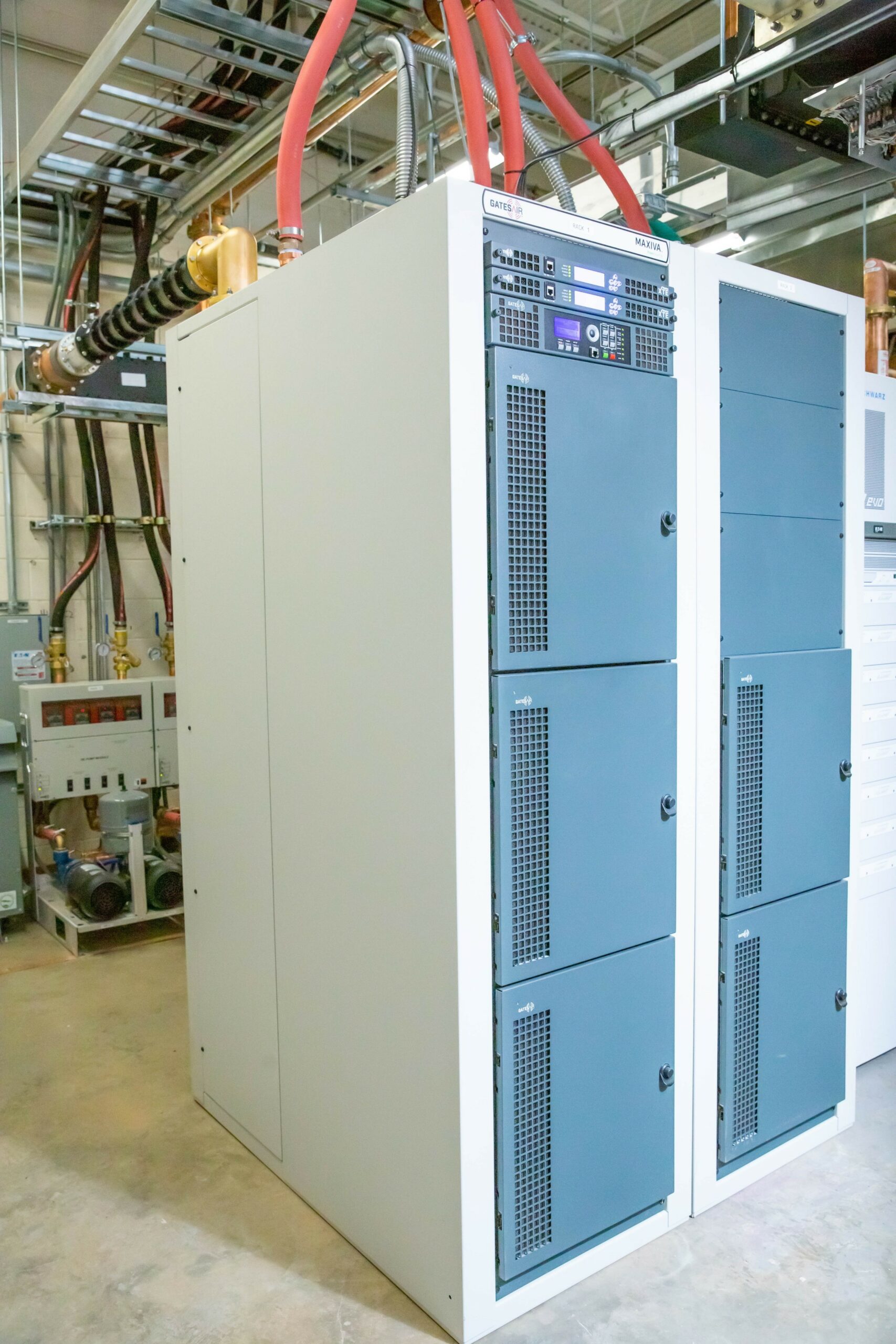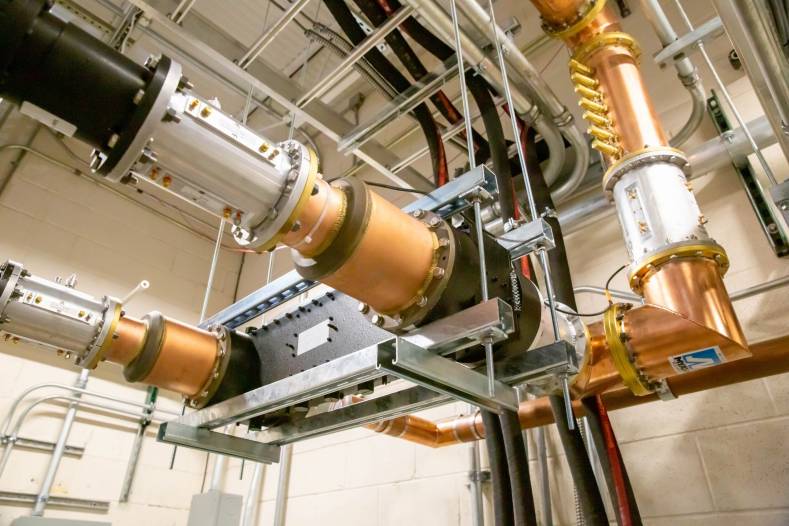Reported By Greg Best | May 8, 2020 | Click here, to read the published news article below on The Broadcast Bridge – Connecting IT to Broadcast.
KMSS lights up a new liquid-cooled transmitter system with just 30 days to TV’s most-watched event.
Recent transmission system upgrades in the United States have largely been driven through the spectrum repack, but these stations don’t cover the entire picture. The last time many TV stations not part of the repack installed a new transmitter was 15 to 20 years ago, for the DTV transition. That reality created an unsatisfactory situation for many TV stations that simply needed a new transmitter.
This was the case for KMSS-DT, a Marshall Broadcast Group-owned FOX affiliate serving the Shreveport, Louisiana market. KMSS was operating a 15-year old Acrodyne transmitter that had performed well over the years, but the stability of the single-tube model was quickly fading. Power reductions were often required to maintain reliability. This allowed KMSS to maintain video quality, but reduced signal coverage.
KMSS is a very high-power UHF station, transmitting at 1 Megawatt ERP on Channel 34. While power reductions allowed KMSS to reach most of the population, the station was no longer providing consistent coverage through its entire licensed contour. As the Acrodyne’s performance and reliability were fading, maintenance needs were escalating in the fight to optimize performance. Pluria Marshall Jr., MBG’s CEO, was not optimistic about the future as he considered the situation just before Christmas 2019. As their consultant, I was asked to consider their options, and what would be required for each.
Re-tube or Upgrade?
Concern grew as the highly-anticipated FOX televised Super Bowl LIV broadcast loomed. There were only two options to ensure that Shreveport-area viewers could clearly receive the event over the air, the first of which was a replacement tube. While the appropriate tube was available, there were few qualified professionals available to install and service the tube and cavity assemblies. Those that were contacted had legitimate concerns about guaranteeing reliable performance for such a high-ticket event, and very few were able to respond within a 30-day window.
The second option of a broader system upgrade with a new transmitter was deemed more desirable. This would not only ensure a reliable, market-wide broadcast for the most-watched TV event of the year – it would also bring KMSS into a modern RF environment with a high-efficiency, solid-state transmitter.
There was another problem to consider, and that was the limited number of high-power transmission vendors serving US broadcasters. The most reliable vendors in the mix had deadline-driven repack commitments to manage, with limited inventory available. Which supplier, if any, could deliver a non-repack transmitter under the 30-day deadline?
We spoke with all the vendors that could deliver a 30kW (TPO) liquid-cooled transmitter along with a mask filter with essentially no success. The latter was the bigger problem, as mask filters are made-to-order systems procured directly from antenna and RF suppliers. These companies had repack commitments of their own, with even less capacity to produce a new mask filter so quickly. The only way to address this was to determine if the existing RF system and mask filter at KMSS could be used.
The unique attributes of KMSS’s existing filter included a combined system to support UHF digital channel 34 and a previous analog channel UHF 33. The system was specially built to combine and route both signals into a common filter to the antenna without a switch. Conversations with most transmitter vendors led to dead-ends, either because they could not turn around a new transmitter in time or work with the existing mask filter.
One day after Christmas, one vendor, GatesAir, confirmed they could handle both challenges. The transmitter, a Maxiva ULXTE-50 UHF liquid-cooled model, was delivered on Friday, January 17. That gave us two weeks to prepare the site and bring the new system online.
Site Preparation
With little time to spare, we quickly brought Bo Hoover and his team at Technical Services Group into the project for installation. In advance of their arrival, we worked with KMSS engineer Steve Henry to clear space and prepare for installation. This included removing a large, HVAC unit that made space for the new transmitter available.
The removal of the old air handling unit was a blessing, as it was positioned directly behind where the ULXTE-50 was to be installed. The power density of the ULXTE-50 is particularly impressive, and it easily fit into the space we planned. The proximity to the air handler would have created a mechanical interference issue with the wiring trays and coolant lines that came into the facility from the outside heat exchangers.
A local electrical contractor was hired to upgrade the electrical system, add new breaker panels, and install a new surge suppressor supplied with the transmitter. A step-down transformer was added for the ULXTE-50, which operates at 240 volts (the previous Acrodyne operated at 480 volts). Steve moved an existing waveguide switch and dummy load to the input of the RF system, which helped the TSG team move straight into the installation phase while keeping the existing Acrodyne transmitter on the air.
As a result, the transmitter cabinets, dummy load, and indoor liquid pumps were all arranged in a standard, space-saving layout, although we positioned the reject load further away due to limited real estate inside the building. The previously-installed waveguide switch was already in place to connect the dummy load with its heat exchanger.
Hiccup
Naturally, there is always a hiccup along the way, when we realized that a six-inch coax to waveguide connection tuned for Channel 34 was required to make the system work. The TSG team retrieved one from a recently decommissioned Channel 34 system. That solved what would have been a major problem due to a long manufacturing lead time for the coax-to-waveguide connection. This piece was quickly added along with thermal interlocks for the heat exchangers and the associated control systems, and soon the system was ready for testing.
We also reconsidered the usual ceiling-mount positioning of the dummy load, as there was a substantial amount of RF coax in the ceiling from an existing transmitter. (KMSS shares a transmitter facility with KSHV-DT.) We decided to mount the new dummy load adjacent to the existing transmitter’s dummy load. The location required three additional elbows to cleanly run RF, without any complicated layouts. Click here to continue reading the full article online.

The GatesAir Maxiva ULXTE-50 easily fit into the space planned.

Some upgrades to support 32 kW TPO were made to the KMSS RF transmission line inside the building.
Click here to continue reading the full article online by Greg Best – Best is President of Greg Best Consulting

